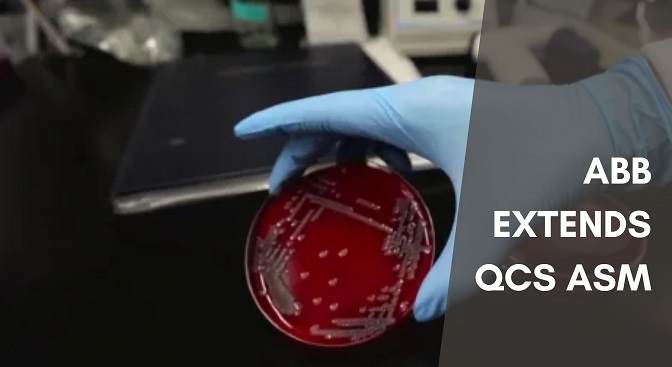How biotechnology could change the face of cosmetics
Researchers at this lab in Boston are working on the next big thing in beauty. And it’s all made possible through the power of biology.
Jasmina Agunovic is the founder and CEO of Archaea Beauty, a startup aiming to build a new sustainable supply chain for the beauty industry using biotechnology.

What is biotechnology?
When you think of a factory and like a big building with equipment and things. They use that equipment to make the things that we want.
Biotech is the same thing, It’s a microbe that’s making those things, and then you let the microbe do the work.
Exactly. With technologies like DNA sequencing, biological engineering, and fermentation, researchers at Archaea are safely growing beauty ingredients in a lab instead of sourcing them from the environment.
We have been creating our ingredients by extraction right from either animals or plants or even petrochemicals. And each of these things has a footprint.
So biology and biotech present a perfect antidote to this, which could create better sustainability profiles, but also new levels of performance that can get consumers excited.
That excitement extends to beauty powerhouses like Chanel and Olaplex, among others who have already invested in Archaea, which raised $78 million in funding in 2021.
We use rose oil as an example. From a manufacturing standpoint, you need 2000 petals to make just a few milliliters of rose oil. And so think of the land footprint, think of the water consumption.
With biotech, however, you take out all of those variables and you’re able to, through a microbe, through a single fermentation, produce what you need and just what you need without all that waste.
Give me an example of another area where we could see some of this biotechnology showing up. One area you might be hearing about in the news a lot is sunscreen.
So this is strange to say, but fish don’t get sunburned, and it turns out they have this molecule that we don’t have as humans.
What they’re doing is studying that molecule and creating it through fermentation so that we don’t have to extract it from fish and looking to bring that to market in sunscreens.
That opens up a whole new way of doing things. So I called biology a new creative tool for the industry.
They get even more excited about all the possibilities, many of which we can’t even imagine today.
Products that remember how to curl your hair in the shower may 1 day become a thing of the future.
Trying to prevent odor?
Instead of masking it, archaea have created an ingredient that can shift the smell away.
So we have here a few Petri dishes of different kinds of microbes that grow in our underarm area. And some of them cause smell and some of them don’t.
So what we wanted to do is to create ingredients that can make them not smell.
So this is what our ingredient technology will ultimately look like. That formulators are going to be and already are working with, we’re calling scent Arc.
That would go into a stick. Exactly. And that becomes the new deodorant. Exactly. Biotechnologists are even helping to revive extinct elements, proving that the possibilities in beauty are endless.
So here you’re about to smell a fragrance from a flower that no longer exists. So this is a flower that existed in Hawaii and went extinct in the 1910s.
Not that it went extinct, but this one. That one is my personal favorite.
These are just scents we’ve never smelled before. And this is all because of what biology enables. So they use DNA sequencing to tell the microbes to smell like this.
So this is an extinct flower from Hawaii that you’ve probably never smelled before, but they took the DNA from a sample of that flower that’s in a library somewhere.
These are scents that have been extinct. This one’s from the Midwest and in this, and Chanel might know this one.
The flower is extinct, but now the scent is not extinct.
We’re going to tell those microbes, and you know what produces no smell at all. That’s what they’re going to put in the deodorant.
So it’s the same microbes, just with a different DNA sequence in it so that it doesn’t smell fast.
Related Post
